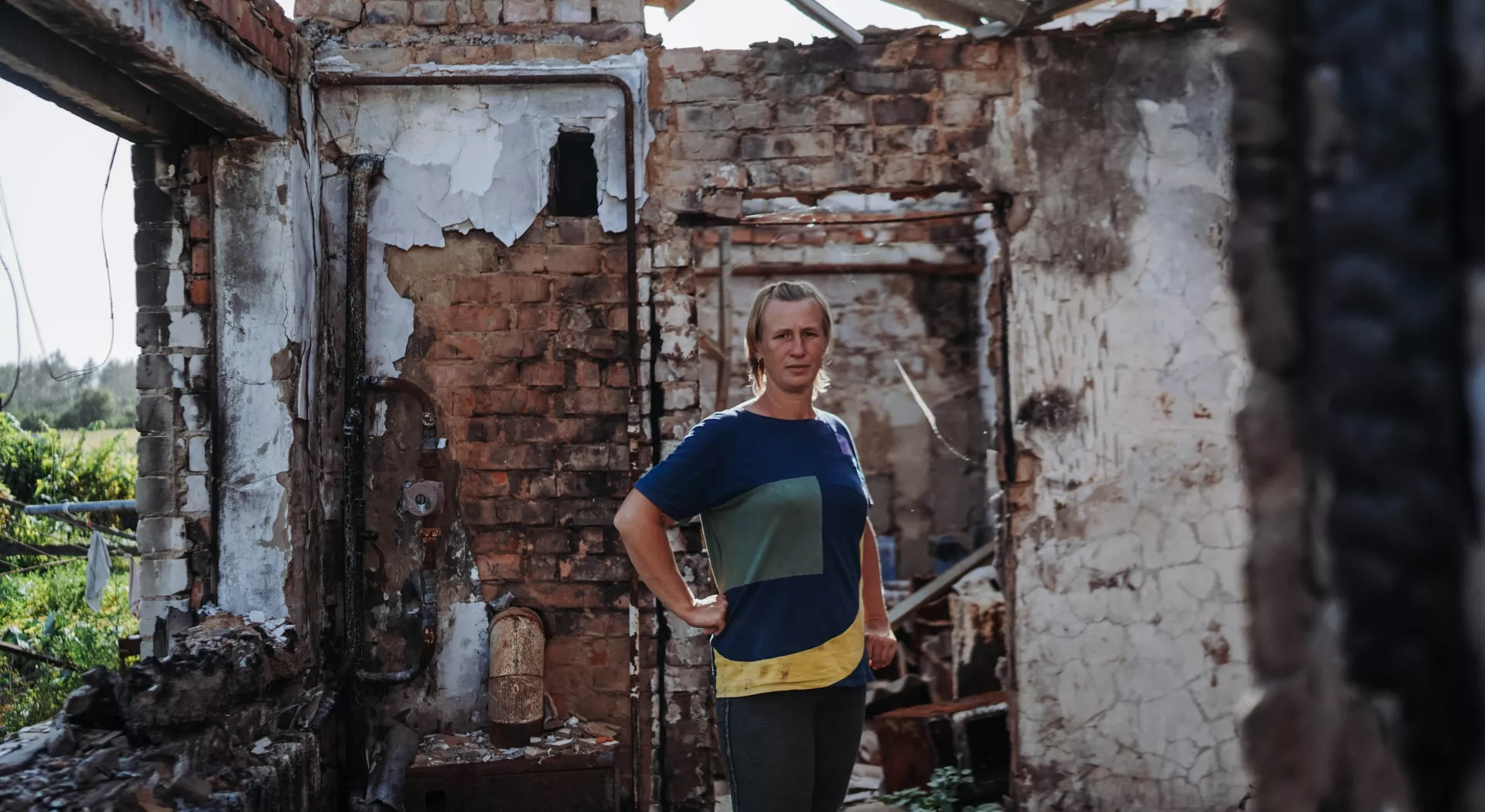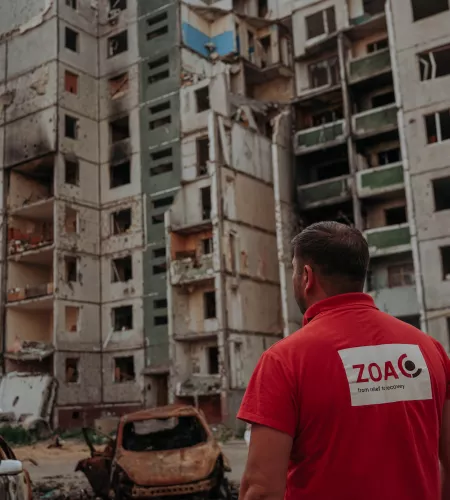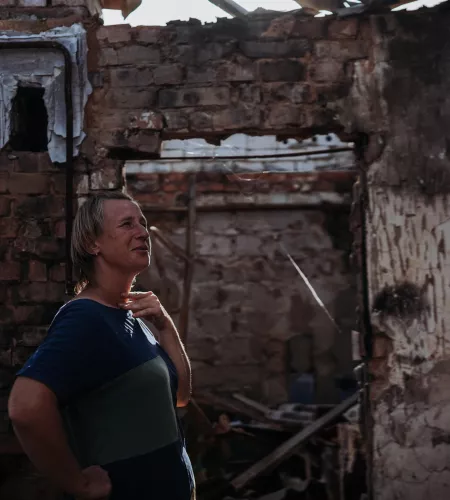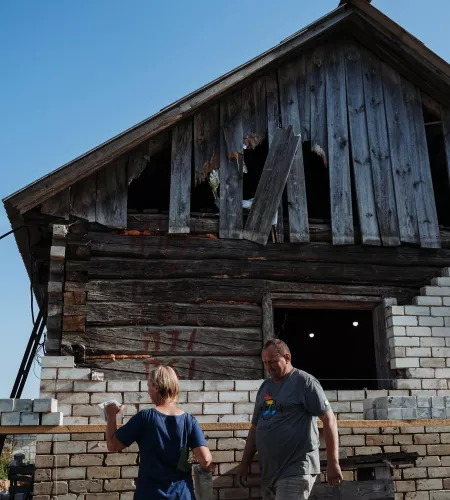“Look,” Maryna Shvets says jokingly, holding up a crumpled piece of paper. “This is the energy bill of our house that is no longer there.” I'm stunned. Maryna, forty years old, has lost everything. The new house where she lived with her husband and four children, for only just four years, has disappeared from the face of the earth. Everything went up in flames when the Russians invaded their village, Trisvyatska Sloboda. How can someone who has lost everything, still joke about it?
Maryna's humour is hopeful. Despite the misery she has been in since March 2022, she has not lost sight of the future. Like so many fellow villagers, she is afraid, that's for sure. Afraid of the cold winter now that so many houses are broken or swept away. But even more so for a return of the Russians to the Chernihiv region in northern Ukraine, where the war began.




